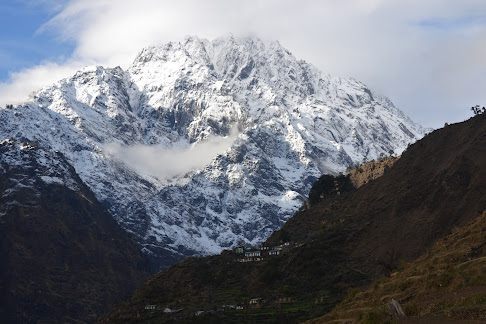The term 'niche' can very simply mean an ecologic space which a particular type of organism exploits. Scientists are a pedantic lot though. They need more rigorous definitions to work with. This has spawned many different ideas about what a niche means and how it can best be described and measured. There is the environmental niche concept which focuses on the physical and chemical attributes of an available space that may or may not be filled by organisms. In this idea, there may be vacant niches, which opportunistic organisms may come to exploit. On the other hand, there is the population niche concept where the niche itself is an attribute of the population. Organism-specific use of its resources, uniquely shaped by the organism's physiology, community structure, and behavior, defines the niche.
Similar organisms may co-exist in a particular space. This may result in niche overlap and niche partitioning as different species vie for the available resources. Ideas of competitive exclusion (competition theory) derive from such co-habitation of space.
I am just giving a flavor of the arguments here and not diving into a discussion of the many niche concepts. For the purpose of this short post I will use the term niche to mean the actual utilization of a space and of available resources by a species/population.
Palaios is of my of my favorite science journals. It published papers on themes intersecting palaeontology, ecology, sedimentology and stratigraphy. Unfortunately, most of the papers are behind a paywall, so I have to make do with reading the abstracts and finding the occasional open access paper on Research Gate and Academia. Browsing through it last week, I came across two interesting examples of very specific fossil niches, one from the Cretaceous and another from the earliest Triassic.
In the March 2020 issue, Alison J. Rowe and colleagues ( Late Cretaceous Methane Seeps As Habitats For Newly Hatched Ammonites) describe a community of ammonites (a type of mollusc) living in the vicinity of cold methane seeps. These fossils are preserved in the sedimentary rocks of the Late Cretaceous Western Interior Seaway, a time when sea levels were high and the mid North American continent was under the sea. Methane seeps often occurred along faults which provided the pathways for the gas to rise from the subsurface and be released on the sea floor. Ancient methane seeps are recognized by the presence of typical communities of clams, fossilized worm tubes, ammonites and bacterial microstructures. There is often the development of cone shaped sediment mounds known as Teppe Buttes, made up of calcium carbonate mud and skeletal remains of organisms. The carbon in the calcium carbonate is enriched in the lighter isotope C12, suggesting its derivation from a hydrocarbon source (the hydrocarbon itself is transformed organic matter which is richer in C12).
Anaerobic oxidation of methane (bacteria stripped electrons and protons from the hydrogen in the methane to drive respiration) provided the energy to build a food web that formed the base of this chemosynthetic ecosystem. These ammonites were small, implying that they were born in this habitat, and their geochemistry indicated that they were incorporating the carbon released from methane to build their shells. What an utterly fascinating mode of life!
The second example is from the Latest Permian-Earliest Triassic (Dwelling In The Dead Zone- Vertebrate Burrows Immediately Succeeding The End-Permian Extinction Event in Australia), preserved in strata deposited just after the biggest mass extinction in earth history. Stephen McLoughlin and colleagues find and describe burrow structures made by small tetrapods. The sediments which contain these burrows are poor in other organic traces suggesting a terrestrial ecosystem which has been stripped bare due to prolonged debilitating environmental conditions. Paleogeographic reconstruction indicates that at this time the Sydney Basin occupied a high paleo-latitude. A burrowing lifestyle, coupled with relatively cooler climate of higher paleo-latitudes may have provided these tetrapods protection from the otherwise harsh post extinction conditions. A nice example of the ecology of post mass extinction survivor fauna.
If you want to explore the history of ideas on the niche concept I can recommend two essays. Niche: Historical Perspectives by James R. Griesmer, and, Niche: A Bifurcation in the Conceptual Lineage of the Term by Robert K. Colwell. Both have been published in the book Keywords in Evolutionary Biology, edited by Evelyn Fox Keller and Elisabeth A. Lloyd.
We have so much more to learn about life.

